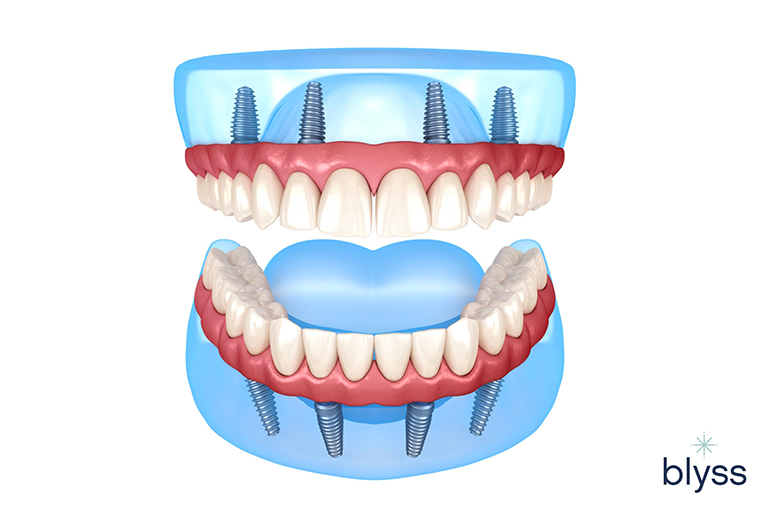Dental Sense Fundamentals Explained
Dental Sense Fundamentals Explained
Blog Article
The Only Guide for Dental Sense
Table of ContentsLittle Known Questions About Dental Sense.Rumored Buzz on Dental SenseThe Buzz on Dental SenseDental Sense - The Facts
are clinical gadgets surgically dental implanted into the jaw to bring back a person's ability to chew or their appearance. They give assistance for synthetic (fake) teeth, such as crowns, bridges, or dentures. When a tooth is lost due to injury or condition, an individual can experience problems such as rapid bone loss, malfunctioning speech, or adjustments to chewing patterns that lead to pain.Oral dental implant systems contain a dental implant body and dental implant abutment and may additionally include an abutment addiction screw. Same day dental implants. The oral implant body is operatively inserted in the jawbone in area of the tooth's origin. The dental implant joint is generally connected to the dental implant body by the joint fixation screw and expands with gum tissues into the mouth to support the affixed artificial teeth
(https://myanimelist.net/profile/dentalsense1)Structure of The Dental Implant System selecting dental implants, speak with your oral provider about the prospective benefits and dangers, and whether you are a prospect for the treatment. Things to take into consideration: Your overall health is a crucial consider figuring out whether you are a good candidate for oral implants, how much time it will certainly require to recover, and exactly how long the dental implant may remain in area.
Smoking cigarettes might influence the healing process and decrease the lasting success of the dental implant. The healing procedure for the dental implant body may take several months or longer, during which time you generally have a momentary abutment in place of the tooth. the oral implant procedure: Thoroughly follow the oral hygiene guidelines provided to you by your dental copyright.
What Does Dental Sense Mean?
Implant failure can lead to the requirement for another operation to repair or replace the dental implant system. Brings back the capability to eat Recovers cosmetic appearance Aids keep the jawbone from shrinking as a result of bone loss Maintains the wellness of the bordering bone and periodontals Helps keep surrounding (nearby) teeth secure Improves quality of life Damage to bordering all-natural teeth during implant placement Injury to the surrounding cells throughout surgical treatment, such as sinus opening Injury throughout surgery (as an example, crack of surrounding jawbone) Insufficient function, such as seeming like the teeth do not attack together typically An experience that the tooth hangs or twisting in area arising from a joint screw loosening Implant body failing (looseness of the implant body) due to systemic infection, which might be much more most likely in patients with unrestrained diabetes mellitus as a result of regional infection in bone and periodontals supporting the implant body as a result of delayed recovery, which might be more most likely in patients who smoke Problem cleansing the gum tissues around the dental implant, resulting in inadequate oral hygiene Untreated periodontal illness Post-surgical numbness as a result of nerve impingement or damage Constantly inform healthcare providers and imaging technicians that you have oral implants prior to any kind of magnetic resonance imaging (MRI) or x-ray procedures.
FDA is not knowledgeable about any damaging occasions reported for MRI or x-ray treatments with dental implants. Oral implants systems are usually constructed from materials that adhere to international consensus criteria of the International Organization for Standardization (ISO) or ASTM International. These standards have details of what makes a secure product.

An oral implant is a framework that replaces a missing out on tooth. With screw-like gadgets, the surgeon inserts a dental implant into the jawbone, and it acts as an anchor for a man-made tooth, called a crown. A gadget called an abutment connects the artificial tooth to the dental implant. The crown is customized to fit the individual's mouth and match the shade of their teeth.
What Does Dental Sense Mean?
Some individuals are not qualified for oral implant surgical procedure. It is for oral cosmetic surgeons to operate individuals with: acute illnessuncontrollable metabolic diseasebone or soft cells illness or infectionIf these concerns are resolved, an individual can have the surgical treatment. In, oral specialists avoid operating people with: If people with any one of the above go through oral implant surgical treatment, there is a higher threat of the dental implant navigate to this website falling short.

Oral implant surgery is a tailored procedure. Give you time to heal. Affix the message and last crown, bridge or denture.
Next, your surgeon will meticulously position the oral implant right into your jaw. Lastly, your surgeon will rearrange your gums and shut the cut with stitches. If your implant is near the front of your mouth, your dental expert will make a momentary tooth for you to use till you heal. In this way, you won't have a void in your smile while you recuperate.
The Best Guide To Dental Sense
During the recovery phase, your jawbone must fuse to the oral implant. This procedure can take anywhere from 3 to 9 months.
As soon as your dental implant heals, your dental professional can attach the abutment (small connector post) and your last repair (crown, bridge or denture). This normally takes regarding one hour to complete and might need a second minor surgery. You should not really feel any type of pain during your dental implant treatment since your provider will certainly make use of medicine to numb your gum tissues.
Report this page